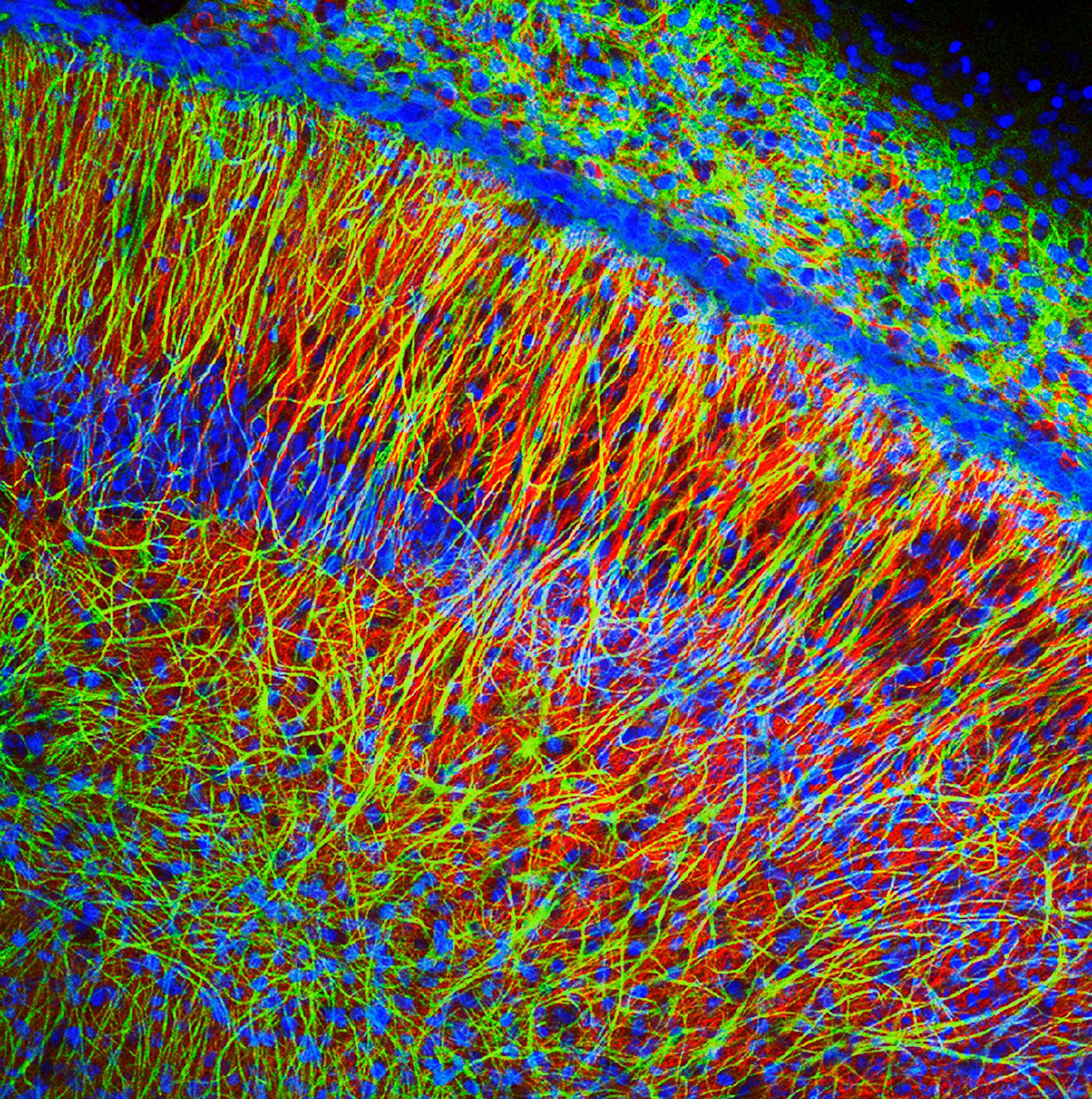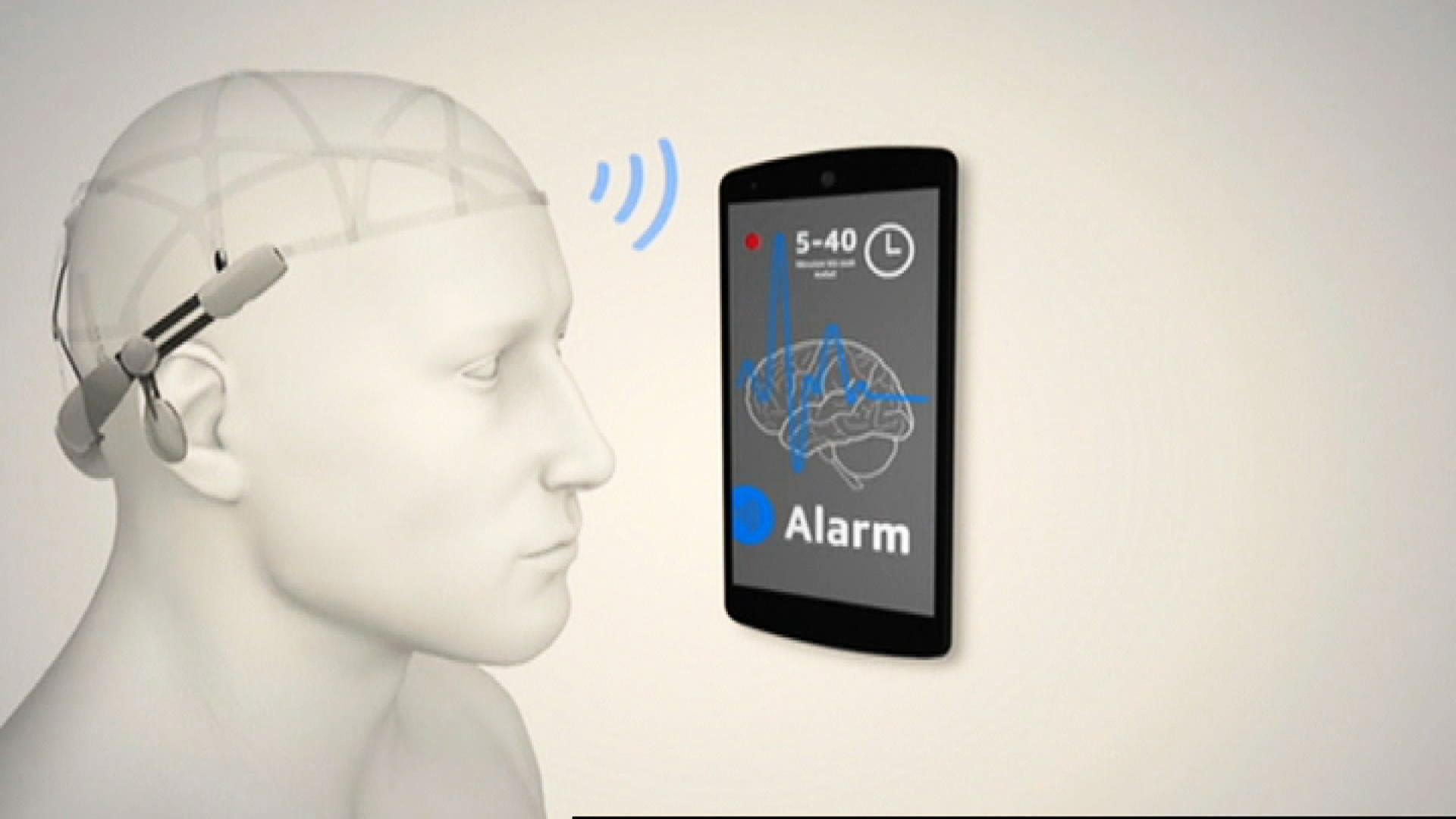
Tricking the brain into re-wiring itself

Swiss neuroscience start-ups and labs are finding novel hi-tech solutions to help patients despite a depressing global lack of treatments for brain disorders.
From the top of the Rocher de Léaz peak overlooking the Rhône River in France, it’s a long way down to the valley floor. Perched high on the cliff face and with the wind whistling in my ears, I don’t feel particularly safe despite my climbing harness and rope.
To my right a fellow climber descends in my direction and waves to check if I’m alright. I shuffle forward and motion with my hand in reply.
It is only then that I remember that all this is not real. I had forgotten I was wearing a virtual reality (VR) headset and earphones. And instead of being bolted on to a cliff face, I was actually standing inside the ‘Reality Substitution Machine’, a demonstration booth at the 2015 Brain ForumExternal link, an international neuroscience conference held at Lausanne’s Federal Institute of Technology (EPFL) earlier this month.
This new experimental project, known as RealiSM, brings together cognitive neuroscience and VR technology to study memory, perception and peripersonal space – the area within a person’s reach – with a view to clinical and therapeutic applications, explained EPFL researcher and project leader Bruno Herbelin.
“We act on stimuli that allow the brain to build our presence into the space in order that the experience appears natural and you forget all the work going on behind,” said Herbelin.
The panoramic climbing scenes visible to me in the VR headset were stitched together from real footage pre-recorded using 16 GoPro cameras on a special tripod. Live sounds were captured using four pairs of microphones.
The headset is fitted with a small stereoscopic camera which films your hands, feet and body movements, and immerses you physically in the scene as it is played back in real time. Your brain is thus tricked into believing that you are really there on the cliff edge.
All this sounds great fun for gamers, but the RealiSM team hope it will also have practical clinical uses. Using cognitive behavioural therapy techniques, specialists could treat anxiety and mood disorders or post-traumatic stress, they claim. The technology is due to be made available in the next couple of years so that experimental scenes can be custom-built.
“We are not hard-wired as humans and experiences can change this wiring in our brains,” declared Dr Jamil El Imad, co-chair of the RealiSM project.
Neuro-rehab
Swiss firm MindMaze External linkhas also fused VR technology with neuroscience. The EPFL spin-off has devised several applications including ‘MindPlay’, an inexpensive rehabilitation product to help stroke and brain injury patients recover use of their limbs. The technology was also on show at the Brain Forum.
Patients are guided through a series of exercises, which they can carry out at hospital or at home, while a custom-made camera tracks their movements. A stroke victim sees an avatar of their unaffected limb on screen performing tasks like hitting a target. Later the avatar image is reversed and the brain is tricked into believing that the damaged limb is in fact healthy.
MindMaze CEO and co-founder Tej Tadi said this leads to “some form of reorganisation or activation between different cortical areas, which we tap into, we measure, and then customise and exercise to maximise that plasticity.”
The exercises enable the early reactivation of neuronal connections between the brain and the damaged limbs, in many cases enabling those arms or legs to move again.
“The first three weeks after a stroke is the golden window of opportunity. Our studies at Lausanne’s University Hospital (CHUV) and at Sion have shown that it’s feasible to start rehab one week after a stroke,” said MindMaze scientist Gangadhar Garipelli.
A prototype to help predict and diagnose epileptic seizures was also presented at the Lausanne gathering last month.

More
New device to predict epileptic attacks
Developed by the Zurich-based NeuroProExternal link medical research company, the device is being further worked on at the Swiss Epilepsy CentreExternal link. Clinical tests will be carried out soon, and the device should be on sale within two years.
These were several successful breakthrough neuroscience technologies on show from among the 30 spin-offs and start-ups present at the forum.
Big brains
Neuroscience is a thriving area of science worldwide. There is now a global movement of big brain initiatives, including the US BRAIN Initiative, and large projects in Australia, China, Japan and Israel attempting to unravel its mysteries.
In Switzerland, the Lake Geneva region, and in particular EPFL are key players in neuroscience. The EPFL was the main coordinator behind the European Union-funded Human Brain ProjectExternal link, before a recent restructuring which took away its leadership role. However, it is a driving force, with over 100 people working on the project based at Geneva’s Campus BiotechExternal link.
At the Brain Forum, EPFL President and neuroscientist Patrick Aebischer welcomed these novel Swiss technologies to help patients suffering from brain-related problems.
“The recent progress in technology and engineering and visualisation allows you to look at the brain in a different way and to gather data that is not feasible before,” he said.
Speaking to the forum’s assembled top scientists, Aebischer, however, gave a blunt reminder of the priorities: “On the one side there are these amazing big brain initiatives, but at the same time how can we bring this new knowledge to develop new therapies? While we have made great progress in our understanding of the brain this has not translated into new therapies in the same way.”
Still no cure
Despite these futuristic technologies to assist people suffering from epilepsy, stroke and brain injury, and mood disorders, new therapies remain elusive.
The G8 nations have set an optimistic goal of finding a cure or effective treatment for dementia – the common set of symptoms that occur when the brain is affected by disease – by 2025. Despite reports this month that US researchers may have found a possible cause for Alzheimer’sExternal link, which affect over 60% of those living with dementia, there is still no cure.
Unlike heart disease and cancer, which have seen major strides in drug development by big pharma, no new therapies have been approved to treat Alzheimer’s in a decade. Between 2002 and 2012, 99.6% of expensive trials of drugs aimed at preventing, curing or improving the symptoms of Alzheimer’s failed or were discontinued, compared with 81% for cancer.
Experts argue this may be because trials are conducted too late, in patients whose condition has already gone too far. Scientists have targeted different aspects of the disease but only one drug has proved effective: Memantine, which is used to improve memory. Prevention currently offers the clearest way forward. Ignorance of what causes Alzheimer’s remains high, together with the heterogeneous nature of the disease, the difficulty of diagnosing it and its slow progression, say scientists.
“When you look at the number of drugs approved by the FDA (US Food and Drug Administration) or EMA (European Medicines Agency) in neuroscience, it’s depressing,” Aebischer noted.
Dementia
Cases of Alzheimer’s, the most common form, and other types of dementia are expected to triple to around 135 million worldwide by 2050, according to the campaign group Alzheimer’s Disease International, putting a huge burden on society.

In compliance with the JTI standards
More: SWI swissinfo.ch certified by the Journalism Trust Initiative
































You can find an overview of ongoing debates with our journalists here . Please join us!
If you want to start a conversation about a topic raised in this article or want to report factual errors, email us at english@swissinfo.ch.